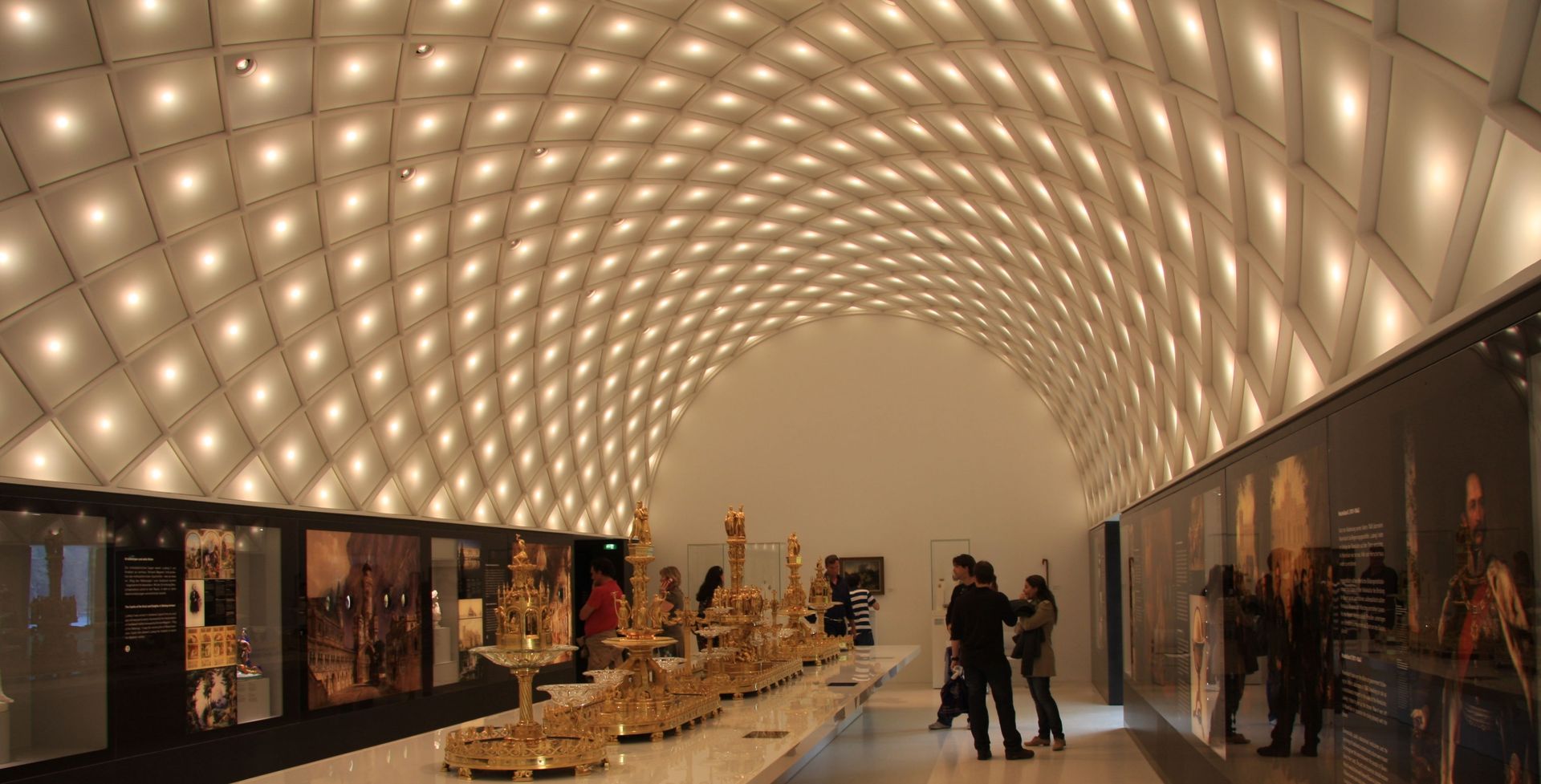Round tour through the exhibition
The Family Tree
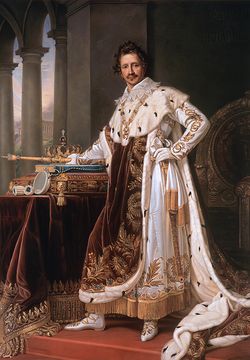
Being one of the oldest dynasties, the House of Wittelsbach stand among the great European noble families. Thanks to an ambitious policy of strategic marriage, the family influenced political events in Europe, and as secular rulers and church electors shaped developments within the German nation of the Holy Roman Empire. The “walkable” family tree displays the most important representatives of the family from the 12th to the 20th century and depicts their rise from dukes to the kings of Bavaria.
Hall of the Kings
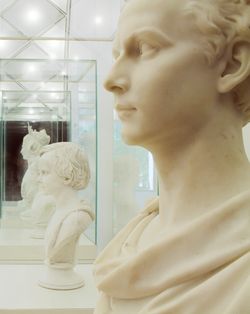
At the center of the exhibition are the builders of the Neuschwanstein and Hohenschwangau castles, King Ludwig II and his father King Maximilian II. Both shared a passion for the picturesque landscape of Hohenschwangau and its castles, and both men were enthralled by the Middle Ages. However, their opinions on the rights and duties of a monarch differed. Given the history of the Wittelsbach family, Maximilian II was proud to regard himself as a constitutional king. His son, Ludwig II, on the other hand, was a devotee of the French Sun King Louis XIV, although his ideal of an absolute monarchy was only ever truly realized in his architecture.
The century of the Kings
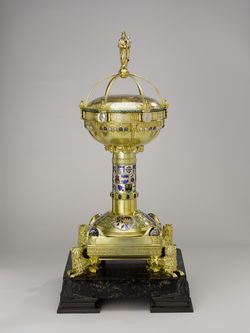
The Kingdom of Bavaria lasted 112 years. Maximilian I Joseph became the first King of Bavaria in 1806, followed by five other members of the Wittelsbach family to succeed him on the Bavarian throne until the end of the monarchy.
Bavarian kings ruled in a century during which the king’s role was defined by the constitution. The Bavarian ruler’s sphere of influence was curbed particularly after Bavaria became part of the German Empire in 1871.
Policy on the Arts and Architecture
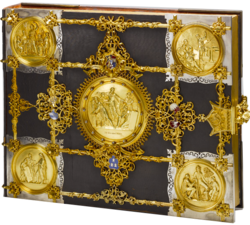
Bavaria owes its glory more to the patronage of the arts and culture than to its military successes. The royal family used the power of the arts and culture to shape an identity which would cement the unity between the land and the monarchy. The Wittelsbachs embarked on a program of impressive architectural endeavors: not only the Residence in Munich, but also the Pompeiianum in Aschaffenburg, the Hall of Liberation at Kelheim, Hohenschwangau Castle and Linderhof Castle. All came to symbolize the existence of a Bavarian royalty.
Kings in the Era of Technology/Progress
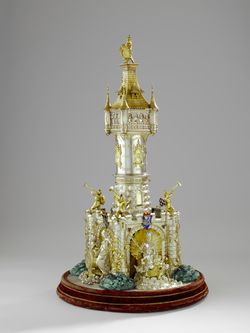
The invention of steam power and electricity are the two major technological achievements of the 19th century. By developing the infrastructure (Ludwig-Danube-Main Canal and the Ludwig Railway), Ludwig I cleared the way for Bavaria’s transition from a largely agrarian state to a center of economy and the sciences. His son Maximilian II provided Bavaria with a forum for technological progress with his construction of the Glaspalast (Glass Palace), inviting leading researchers and scholars to his city of residency. Ludwig II followed in his father’s footsteps with the construction of the Polytechnic School (today the Munich Technical University).
Monarchy and Society
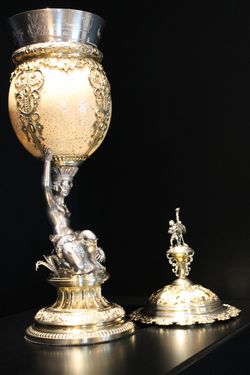
The 19th century was marked by technological progress and great social upheaval. With the emergence of a working class and an industrial elite, new social strata formed. The Bavarian royal family also adjusted to the social challenges of the time. The monarchy and the monarch retained a firm role in social life. The numerous gifts bestowed on the royal family bear witness to the high esteem that Luitpold the Prince Regent in particular enjoyed at all social levels.
The Legendary Ludwig II
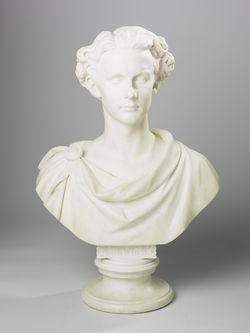
Undoubtedly the most famous ruler of the Wittelsbach dynasty was King Ludwig II. His life, his passions and his death are all shrouded in mystery and he became known as the Fairy Tale King, a legend. Even during his lifetime, Ludwig II was a king whose existence was largely conveyed in portraits of the handsome 18-year-old ruler – and still is today.
The golden Wedding
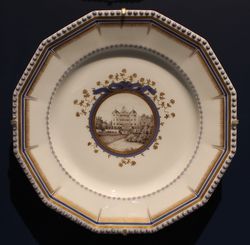
Shortly before the unanticipated end of the monarchy, Bavaria celebrated the golden wedding anniversary of the last royal couple, Ludwig III and Queen Marie Therese in January 1918. As a gift their children gave their parents the “Royal Bavarian Service” manufactured by the Royal Porcelain Manufactory Nymphenburg. Each piece of the 328-piece service depicts a place that held a personal memory for the Royal couple, such as a family property or a site of Wittelsbach history. To mark their anniversary, the royal couple donated a large sum of money to the poor and war wounded.
The End of the Monarchy
The end of the First World War marked the end of the Wittelsbach dynasty’s rule in Bavaria: King Ludwig III released his officials and soldiers from their oath of allegiance but refused to officially renounce his claim to the throne. Following the death of his father in 1921, Crown Prince Rupprecht became head of the House of Wittelsbach. As an outspoken opponent of the Nazis, he went into exile in Italy in 1939; in July 1944 his family was interned in concentration camps.
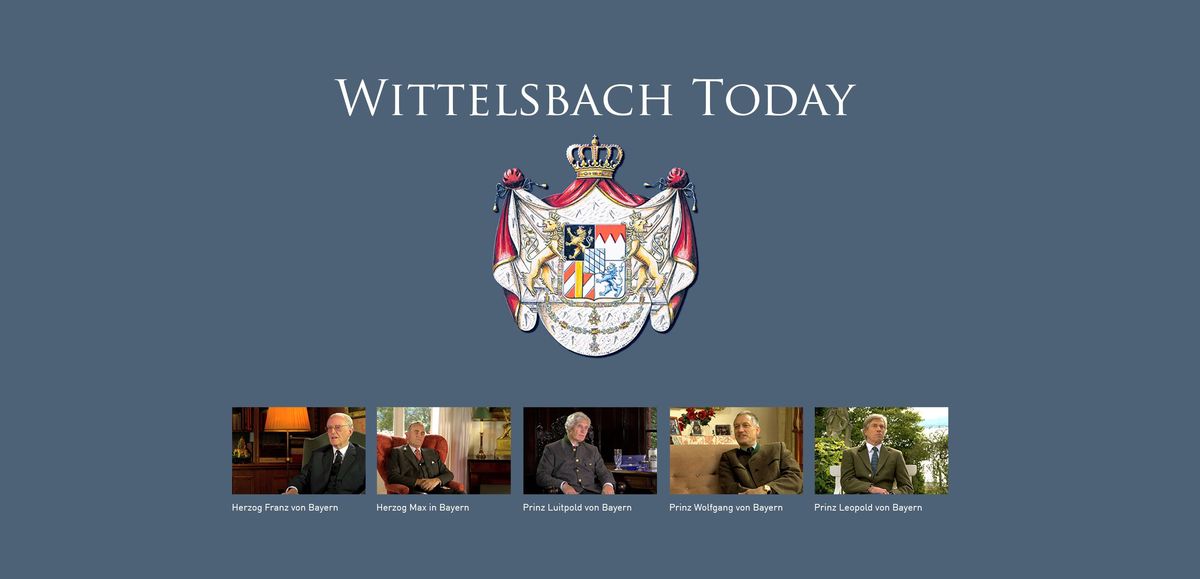
Bavaria and the Wittelsbach Today
In the Free State of Bavaria, the political position of the Wittelsbach dynasty was replaced, with the family retaining an important place in the state’s historical memory. As time went on, the former ruling family and the democratic state were able to exist side by side with no problems whatsoever, in a manner not found elsewhere. Following the death of Crown Prince Rupprecht in 1955, his son Albrecht took over as representative of the dynasty, followed since 1996 by his successor, Duke Franz of Bavaria. So as the Wittelsbach dynasty has been shaped by Bavaria, the state and its people, so, have also, the history, culture, appearance and identity of Bavaria been defined for over 700 years by rulers from this dynasty – and this can still be seen today. Bavaria has many faces. One of them is the Wittelsbach.




